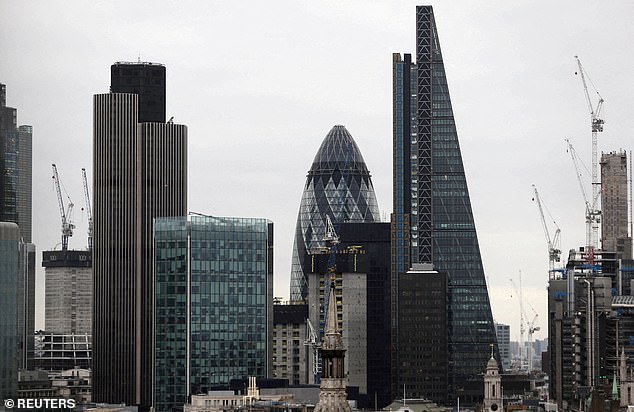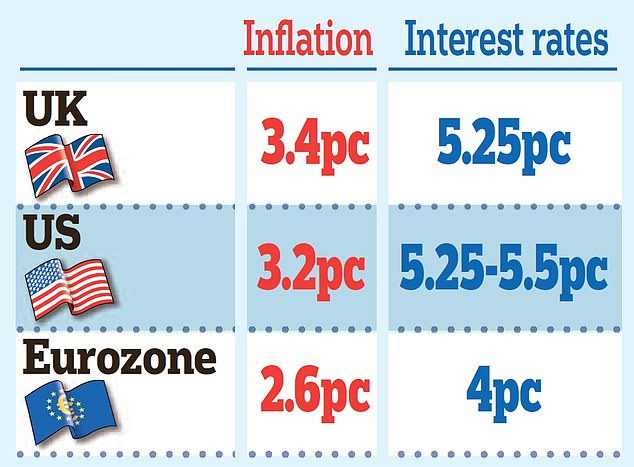<!–
<!–
<!– <!–
<!–
<!–
<!–
Global stock markets soared yesterday on hopes that the trend toward lower interest rates will accelerate on both sides of the Atlantic.
The FTSE 100 index rose almost 2 percent to its 11-month high of 7882.55 after Bank of England Governor Andrew Bailey said “things are moving in the right direction ” in favor of a reduction as inflation falls.
His comments come after members of the Bank’s Monetary Policy Committee (MPC) voted 8-1 in favor of keeping rates unchanged – with one of them arguing for a reduction.
Importantly, this was the first time since September 2021 that no one voted in favor of an increase.
At the MPC’s last meeting in February, two members called for another rate hike.

Boost: The FTSE 100 rose almost 2% to an 11-month high of 7,882.55 after Bank of England Governor Andrew Bailey said “things are moving in the right direction direction” in favor of a reduction as inflation falls.
“The Hawks are throwing in the towel,” was the verdict from Neil Wilson, chief market analyst at financial services group Finalto.
Sterling fell more than a cent against the U.S. dollar to less than $1.27 as investors bet U.K. rate cuts were on the horizon.
In New York, Wall Street stock indexes hit record highs as the Federal Reserve stuck to its forecast of three rate cuts this year, even as U.S. inflation proves stubbornly high.
And, surprisingly, the Swiss National Bank cut interest rates, fueling expectations that others would soon follow suit.
Markets were supported by hopes that a prolonged period of high interest rates – as central banks battled high inflation – would soon end.
In Britain, inflation fell to 3.4 percent and is expected to fall below its 2 percent target as early as next month.
Markets estimate there is more than a 60 percent chance that rate cuts will begin in June, with two more cuts occurring before the end of the year. There is even a one in five chance that this will happen in May.
Rates have remained unchanged since last summer, but the MPC’s most hawkish figures have continued to argue that further increases are necessary.
But two of those hawks, Catherine Mann and Jonathan Haskel, have changed their minds and agree that the rates are high enough as they are.
And there was even greater joy yesterday, as a closely watched business survey confirmed that the recession seen at the end of last year was over, with a “strong rebound” in the first quarter.


Inflation in the United States rose unexpectedly, but markets were cheered when the Federal Reserve did not lower its rate cut forecast on Wednesday.
It is looking increasingly likely that June will be the month the Fed and Bank of England act – alongside the European Central Bank – after euro zone inflation fell to 2.6 percent.
Andrea Rossi, chief executive of investment group M&G, said: “Inflation has been better controlled. It’s getting closer to that 2 percent goal, we’ll see if it hits this summer.
“I suspect at that point we will potentially see rate cuts for the summer. This could have positive effects for us.
“We will likely see institutions move away from money markets and toward more active asset management strategies like fixed income or even private assets.”
The Bank yesterday left the key message of its interest rate guidance unchanged – that it will “closely monitor” how long it remains at the current level.
Bailey said rates had not been cut yet “because we need to be sure that inflation will return to our 2 percent target and stay there.”
Martin Beck, chief economic advisor at the EY ITEM Club, said: “The Monetary Policy Committee’s latest interest rate decision has taken a more conciliatory tone than expected.
“And some have suggested that it wouldn’t take much for some members currently in favor of leaving policy unchanged to start supporting a rate cut.”

